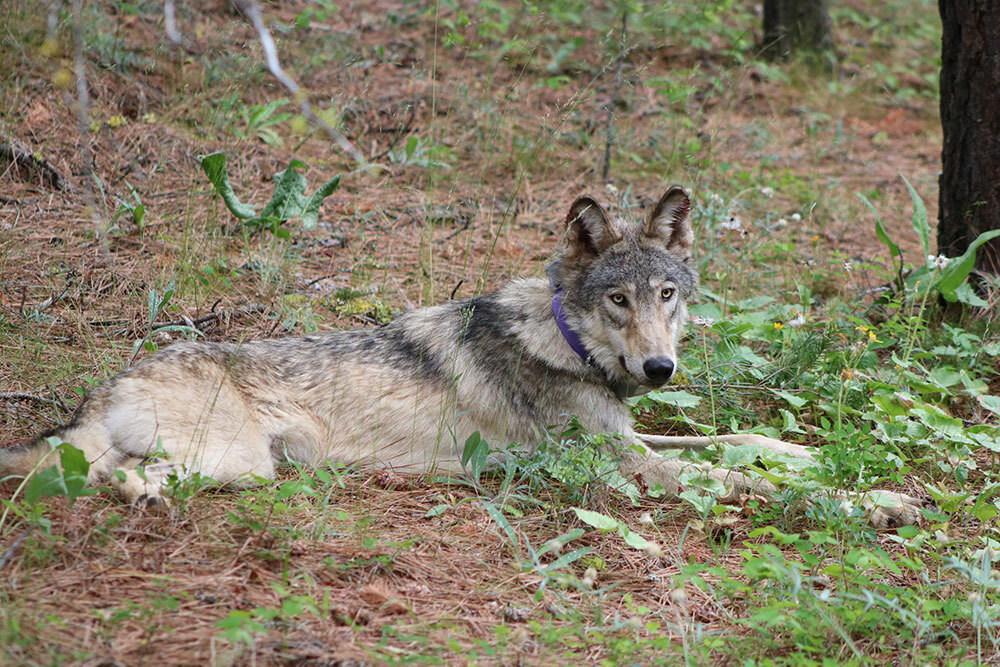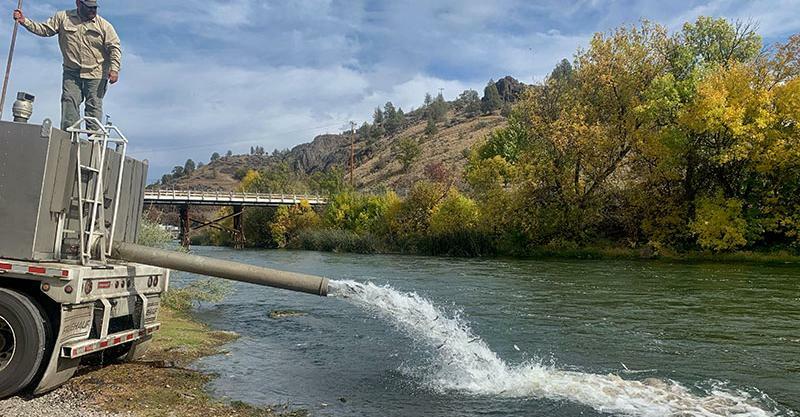From Sportfishing
Fish Report for 11-24-2021

OR93 Found Dead in Kern County
11-24-2021
California Department of Fish & Wildlife
On November 10, OR93 was found dead near Interstate 5 near the town of Lebec, California. Following a full investigation and necropsy, the California Department of Fish and Wildlife (CDFW) has determined that the wolf died from trauma consistent with vehicular strike and does not suspect foul play.
On the afternoon of November 10, the Oregon Department of Fish and Wildlife received a phone call from a truck driver who witnessed the deceased wolf along a dirt trail near a frontage road running parallel to I-5. A CDFW warden responded to the scene to collect the carcass which was quickly identified as OR93 because of its collar.
The carcass was transported to the Wildlife Health Laboratory in Rancho Cordova, California where a complete necropsy was performed. The wolf had significant tissue trauma to the left rear leg and a dislocated knee as well as soft tissue trauma to the abdomen. The injuries were deemed to be caused by a vehicle strike.
Young gray wolves can disperse very long distances from their natal area and OR93 is no exception. Before his demise, he was documented traveling the farthest south in California since wolves returned to the state, which is historically wolf habitat. The last documented wolf that far south was captured in San Bernardino County in 1922.
OR93 was a male wolf born in 2019. He dispersed from the White River pack in northern Oregon. When his collar was providing information, he was tracked entering Modoc County on January 30, 2021. After briefly returning to Oregon, he reentered Modoc County on February 4. On February 24, he entered Alpine County after passing through portions of Lassen, Plumas, Sierra, Nevada, Placer, El Dorado, Amador and Calaveras counties. On February 25, he entered Mono County. In mid-March, he was in western Tuolumne County. By late March he was in Fresno County, and then entered San Benito County after crossing Highway 99 and Interstate 5. He was in Monterey County on April 1 and his last collar transmission was from San Luis Obispo County on April 5. Through April 5 he had traveled at least 935 air miles in California, a minimum average of 16 air miles per day.
CDFW strongly encourages the public to be aware that the wolf population continues to grow in California and to know the difference between wolves and coyotes. Though gray wolves are generally much bigger than coyotes, they can sometimes be misidentified. We encourage the public to review this wolf identification page which provides tips for differentiating between wolves, coyotes and dogs.
Gray wolves are listed as endangered pursuant to California’s Endangered Species Act (CESA). It is unlawful to harass, harm, pursue, hunt, shoot, wound, kill, trap or capture gray wolves. Anyone who believes they have seen a wolf in California can report it to CDFW at wildlife.ca.gov/Conservation/Mammals/Gray-Wolf/Sighting-Report.
Gray wolves pose very little safety risk to humans. CDFW is working to monitor and conserve California’s small wolf population and is collaborating with livestock producers and diverse stakeholders to minimize wolf-livestock conflicts.
Gray wolf management in California is guided by CESA as well as CDFW’s Conservation Plan for Gray Wolves in California, finalized in 2016. More information is available on CDFW’s wolf webpage at: wildlife.ca.gov/conservation/mammals/gray-wolf.
< Previous Report Next Report >
More Reports
California Department of Fish & Wildlife Reports
for Saturday, November 20th, 2021• Commercial and Recreational Dungeness Crab Fishery Update
CDFW Saves More Than 2 Million Chinook Salmon From Drought; Begins Releasing Fish into Klamath River as Conditions Improve
Klamath River - Middle
11-19-2021
The California Department of Fish and Wildlife (CDFW) has begun releasing juvenile fall-run Chinook salmon into the Klamath River now...... Read More

Website Hosting and Design provided by TECK.net